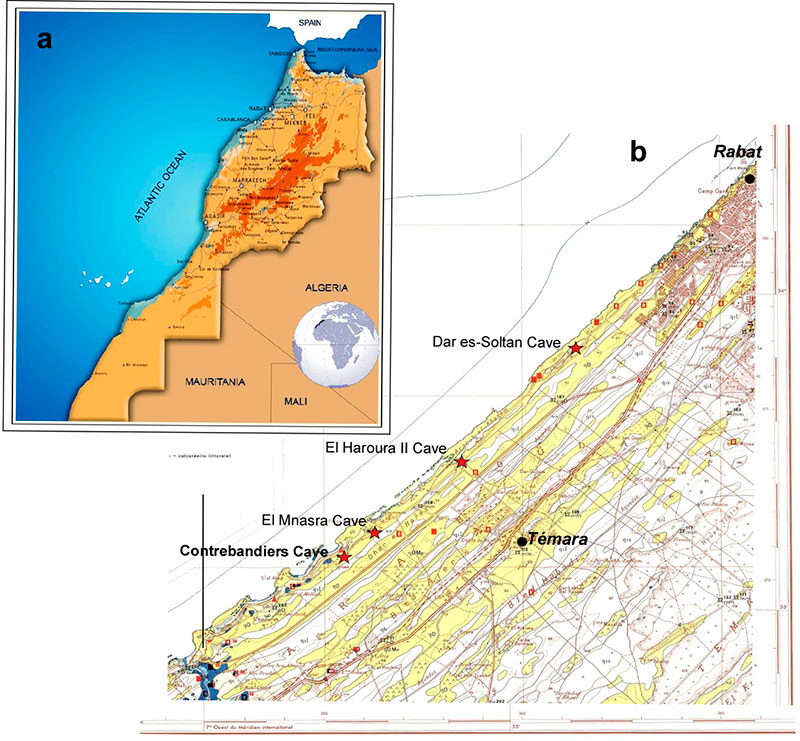Early Modern Human Behavior at Smugglers’ Cave, Morocco
Curatorial Section
Research Discipline
Archaeology
Dates
2007 - 2012
Expand Global Research
Over more than a century, we’ve opened up endless exploration across six continents. New field work endowments will ensure our continued leadership in national and international field research and discovery.
Give Now- Location Information
-
Smugglers’ Cave (or La Grotte des Contrebandiers) is located in Temara Plage on the Atlantic coast of Morocco – 20 km southwest of Rabat.
- Time Period Studied
-
Smugglers’ Cave was first occupied around 110,000 years ago and primarily contains deposits from the Late Pleistocene through the early Holocene.
- Researcher(s)
-
- Harold L. Dibble, University of Pennsylvania
- Mohamed A. El Hajraoui, Institut National des Sciences de l’Archéologie et du Patrimoine, Rabat, Morocco
- Vera Aldeias, Max Planck Institute for Evolutionary Anthropology, Leipzig, Germany
- Research
-
The site of Smugglers’ Cave (Atlantic coast, Morocco) is important in the debate on the origins of modern humans. Not only is the site one of the few with modern human remains associated with stone and bone assemblages, it also yields advanced features including stemmed stone tools, bone tools, hearths, the use of ochre, and pierced shells. However, many of the features of the stone tools are typical of an archaic, Middle Paleolithic-type industry not unlike those associated with Neanderthals in Europe.
New dates suggest the Aterian at Smugglers’ first appeared 100,000 years ago, much earlier than previously thought. By combining state of the art excavation methodology, lithic analyses, and archaeozoological studies of the fauna, we are able to carefully examine the nature of Aterian behaviors and ecology at the brink of the behavioral innovations that define our species.
- Additional Sponsors
Smugglers' Cave is one of the key sites of the Aterian stone tool industry with modern human fossils, shell beads, and stemmed stone tools. The Penn Museum began excavations there in 2006.
People Associations



